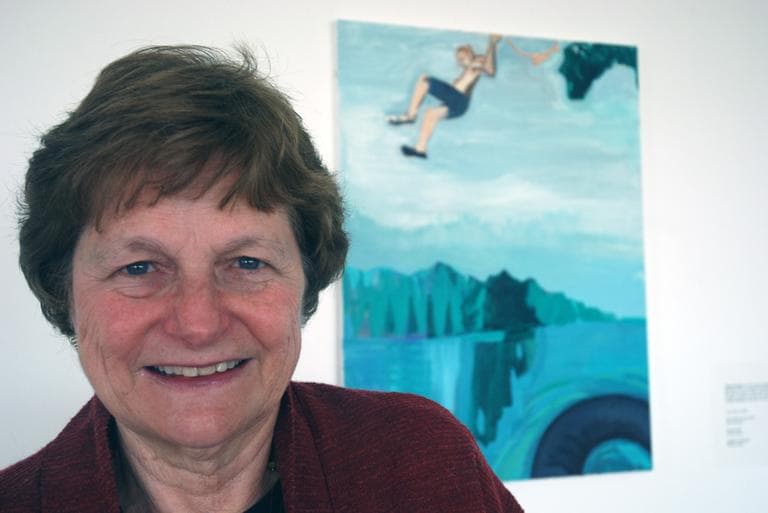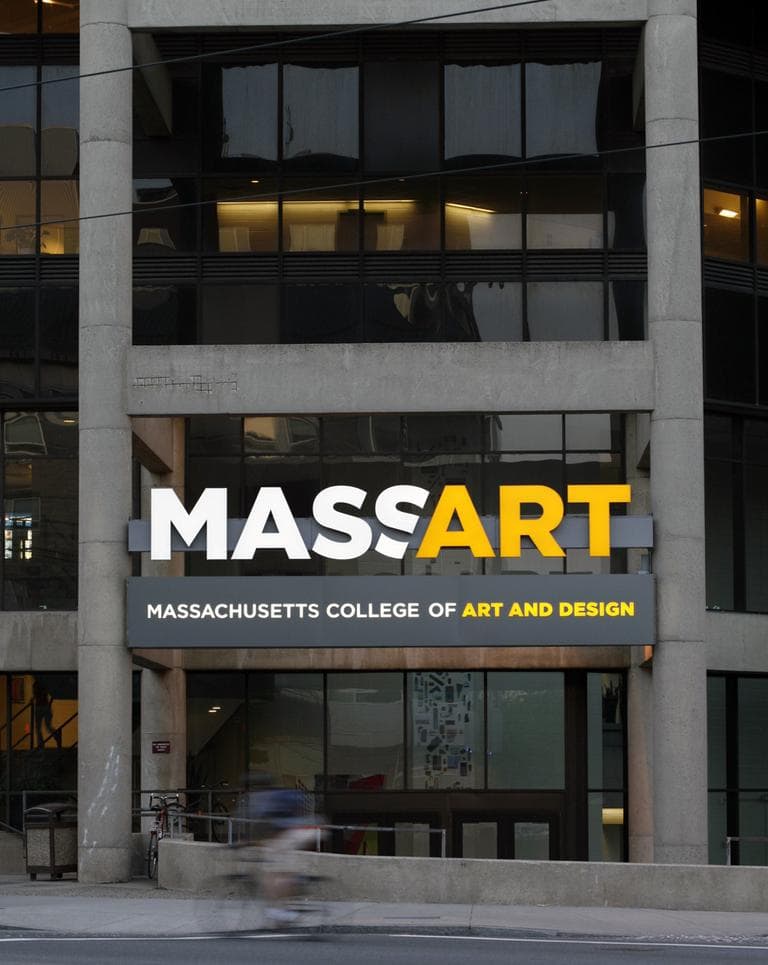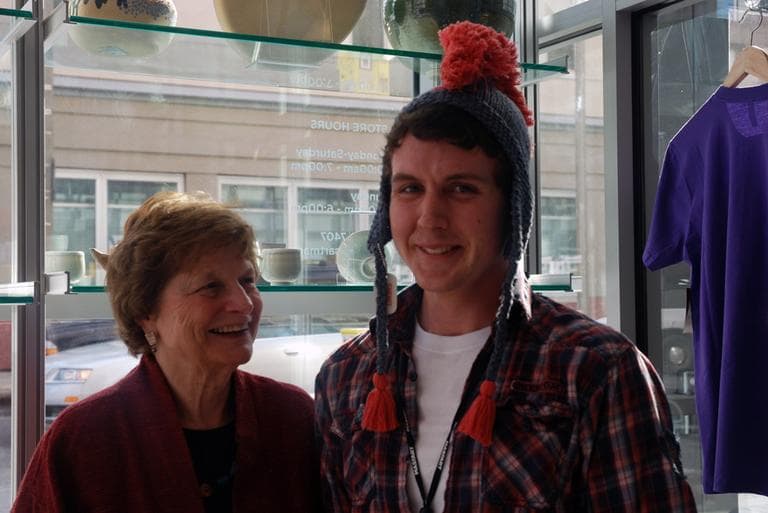Advertisement
MassArt President Kay Sloan Retires After 15 Years

Graduation season is here, in full force.
Students at the Massachusetts College of Art and Design who receive their degrees Friday aren't the only ones moving on from college. After commencement, the school’s president will enter the next phase of her life, too.
Kay Sloan has led the nation’s only publicly funded art college through 15 years of unprecedented growth and an ongoing campaign to raise MassArt’s profile, which hasn’t always been an easy task.
You can see a lot of new creations at MassArt these days and Sloan’s fingerprints are all over them. A 21-story dorm is being built on the Huntington Avenue campus and a sleek, college-affiliated boutique just opened on the corner of Longwood Avenue.
The boutique sells work by MassArt students, faculty and alumni — everything from paintings to hand-knit Viking hats to DVDs. It has “Barton Fink” and “Oh Brother Where Art Thou” on the shelves because set designer Nancy Haigh is a grad. Most recently, she worked on “True Grit.”
Half of the proceeds go to the artists, 40 percent supports the store and 10 percent feeds a MassArt scholarship fund. The whole venture could be seen as a symbol of President Sloan’s 15 years at the school. She has really had to sell MassArt in order to raise its stature and that has required a certain amount of "true grit" all its own.
"It doesn’t take much to recognize how important visual literacy has become in the last couple of decades and the emphasis upon media and new medias is ubiquitous," Sloan said. "I think people are recognizing that art is not something that is peripheral, but it’s at the core of how we need to think if we’re going to be an innovative society."
Advertisement

And a competitive state. Sloan has also emphasized MassArt’s responsibilities as a public institution.
Students are encouraged to be "citizen artists," engaging with communities and school children. Keeping tuition affordable and raising enrollment have been priorities, too, along with expanding the campus and programming. But Sloan’s biggest challenge came in 2004 when Gov. Mitt Romney threatened to take away the 130-year-old public art school’s public status.
Kathy Bitetti has been an aggressive arts advocate on Beacon Hill for 20 years. She knows firsthand what it takes to get political leaders to listen to concerns from the arts community. She has observed, and admired, Sloan going to bat for MassArt.
"The tough part is that they actually want to see you and talk to you — that you’re the right spokesperson," Bitetti said. "That’s what matters and she’s the right person. If you don’t have someone who can tell the story, they’re not going to hear you."
Sloan told MassArt’s story with solid numbers, according to Bitetti. In the end, the president designed a groundbreaking funding model and saved the school.
"I think she’s made the case very well that [MassArt is] important not only on a human level, but also for the creative economy and the fabric of the state," Bitetti said.
The creative economy — artists, software developers, Web designers, composers — have become a huge part of the state’s economic engine, according to Sloan.
"I think there are over 80,000 people working in the design fields alone in the Boston area," Sloan said. "We played a role in trying to prepare students for those areas, but also to work with businesses and government to help people understand how important these industries are."
MassArt alumnus Josh Randall knows. He’s the creative director at Harmonix Music Systems, the company that created Guitar Hero and Rock Band. He graduated in 1994.

"At the time, I think the school was trying to figure out its relationship to all that stuff," Randall said.
Randall says his alma mater has come a long way — evolving its artists with opportunities created by the Internet revolution. MassArt’s profile has shifted as well.
"I meet more and more people that are from MassArt," Randall said. "I remember after graduating I would be like, ‘oh, I graduated from Mass Art’ ... I could kind of tell that they didn’t know what that was."
Now, Randall says there are eight to 10 MassArt graduates working at Harmonix. According to the school, over a recent four year period, 88 percent of MassArt graduates found employment six months after graduation. Sloan is proud of those numbers and the students behind them.
"Every year, going to commencement and seeing the progress that these young people have made from the day they came for orientation and looked so scared and so unsure of themselves," Sloan said, laughing, "to being confident young people. I think that’s going to be very different for me, to be sitting on the sidelines for that."
But Sloan’s days of fighting for the arts aren’t over. She’s been appointed to the board of the Massachusetts Cultural Council.
At MassArt, Sloan spearheaded the largest fundraising campaign in the school’s history and the $140 million she helped raise will continue to transform the college.
This program aired on May 20, 2011.
